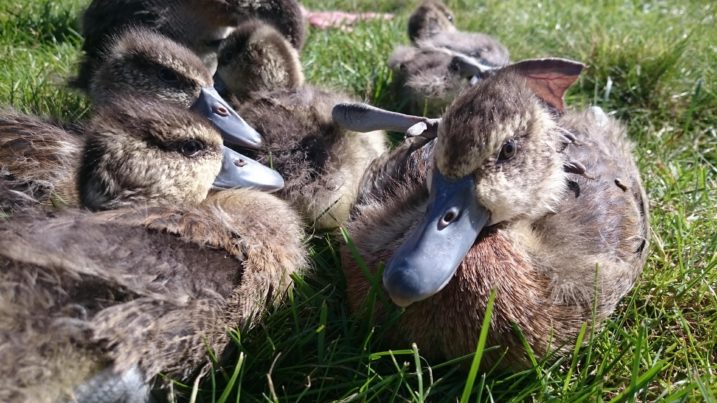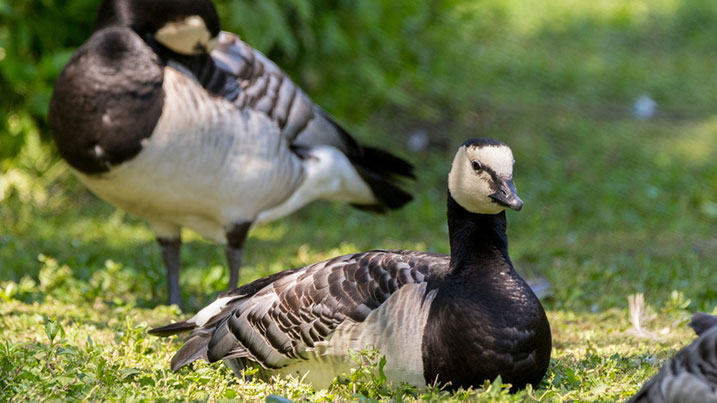White face whistling duck
The white face whistling duck is a perching duck found in Africa and South America. Perching ducks are rather confusing, as they are more closely related to swans and geese than to other ducks.
As their name suggests they have a characteristic white face surrounded by a black head, with the rest of their body covered in a various shades of brown. You can often see them resting on one leg.
Mutual preening for happy pair bonds
If you keep an eye out during the early summer you may be able to watch pairs mutually preen each other, strengthening a pairs bond – this behaviour is known as allopreening.
Ducks are usually thought to quack, but this species produces a three note high pitched whistle which allows individuals to identify one another in the large flocks they form. It is also believed that as well as mutual preening, whistling helps pairs maintain bonds.
Ducklings look like little bandits with black stripes over their eyes
Eggs are laid at the beginning of the rainy reason, in the early months of summer. Like most other ducks with one egg is laid a day and incubation begins once the clutch is completed, to ensure an equal development inside the egg. Ducklings emerge from their eggs looking like miniature bandits, as they have black striped heads and bodies. They also possess long legs, which they will eventually grow into, allowing them to perch like their parents.

Stable populations
White faced whistling ducks are common in both the wild and captivity. At Slimbridge they flock together all year round and can be found paddling around together in the flamingo lagoon, keep an ear out for that high pitched whistle!

